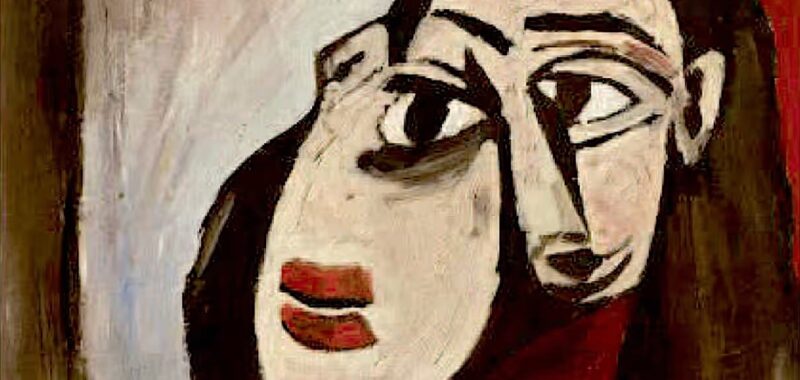
Could a monstrous-looking portrait discovered by a junk dealer actually be a Picasso original? According to recent claims by some art experts, it may very well be.
As first reported by the Guardian today, the painting was initially found more than half a century ago when Luigi Lo Rosso was scavenging the basement of a house in Capri for goods to sell. Since 1962, when he brought the canvas back home with him to Pompeii, it has remained hanging on a wall, its creator and subject a mystery, until Lo Rosso’s son Andrea began looking into the work’s origins.

After years of seeking advice from expert art historians and investigators, the Lo Rosso family finally received an answer from the Arcadia Foundation, an art appraisal and research organization, who confirmed that the reddish inscription on the canvas’s upper-left corner belonged to the famed Spanish painter.
“My father was from Capri and would collect junk to sell for next to nothing,” Lo Rosso told the publication’s Rome correspondent Angela Giuffrida, adding that his father, who died three years ago, “didn’t have a clue who Picasso was.”
Forensic graphologist Cinzia Altieri, who works on the Artadia Foundation’s scientific committee, told the Guardian that she spent months comparing the signature to those featured on Picasso’s original works “after all the other examinations of the painting were done.” Now, she says she is certain that the moniker is real.
The painting has yet to be verified by the Picasso Administration, run by the artist’s daughter Paloma Picasso. The foundation, which has the final say on the work’s authenticity, has not yet responded to Hyperallergic’s inquiry.
The painting’s subject bears some similarities to works Picasso created that were inspired by the Surrealist photographer, artist, and poet Dora Maar. Like artist Françoise Gilot and model Marie-Thérèse Walter, Maar (born Henriette Theodora Markovitch) had a famous romance with the Spanish painter and served as a “muse” for many of his artworks, such as “The Weeping Woman” (1937), “Portrait of Dora Maar” (1937), “Dora Maar au Chat” (1941); and “Tête de femme (Dora Maar)” (1941/1950s). She is also credited with documenting Picasso’s process of creating his famous anti-war painting “Guernica” (1937).
Lo Rosso told the Italian newspaper Il Giorno that he intends to auction the work, as his father had wanted. In the meantime, the painting is securely stored in a vault in Milan.
“Yesterday I got the confirmation that my grandfather had been waiting for for 60 years,” Valentina La Rosso, Andrea’s daughter, wrote in a Facebook post earlier today.
“Supposedly, in my growing up, I always had negative thoughts about the beauty of this picture. I looked at it, I touched it, I thought what story it could have had before my Grandpa found it,” she continued.
Hyperallergic has reached out to Andrea Lo Rosso and the Arcadia Foundation for comment.
“Today all the newspapers are talking about it, but this great victory goes to my grandfather and father who always believed in us,” Valentina Lo Rosso said.

